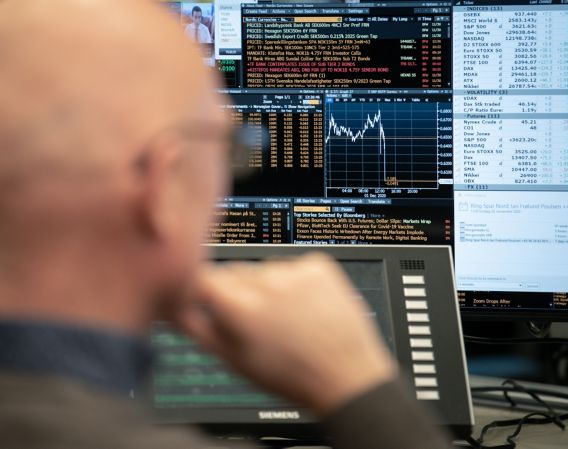FX options
With an FX option, your business can hedge against unwanted exchange rate fluctuations.
What is an FX option?
An FX option provides you with an opportunity, but not an obligation, to transact at a specific exchange rate in the future. If you, for example, purchase a call option, you have the right to buy currency at a predetermined price. You can also choose not to use the option. So in other words, there is no obligation to trade at this price, in contrast to trading FX Forwards
An insurance policy against unwanted price changes
An FX option can also be described as an insurance against unwanted exchange rate fluctuations. Let's say you are concerned that the Norwegian krone will become more expensive. You therefore buy the right to trade at the current exchange rate through an FX option. If the krone becomes more expensive, you can make use of the option and buy at the agreed option price. If the krone should weaken, you can still choose to trade at a better market price than the option gives you.
Options are divided into two categories
Options are divided into two categories. Call options give you the right to buy the underlying instrument at a predetermined price. Put options give you the right to sell the underlying instrument at a predetermined price. In other words, when you buy a put option, you are buying the right to sell currency at a predetermined price. The agreed price is called the strike price. The price you pay for the option is called an option premium.
Why buy an FX option?
The advantage of an FX option compared to an FX forwardis that business has the right to use any advantageous price changes in the period up to the settlement date. On the maturity date, the company can choose between the strike price and the current market price (spot price).
How is an FX option priced?
The option premium is usually stated as a percentage of the contract amount and is paid when entering into the FX option contract. The size of the premium depends on the following factors:
- Volatility: The premium increases with higher volatility. Volatility is an expression of the market’s stability at the current time. High volatility means a high degree of instability.
- Term: The premium increases with the length of the FX option
- Strike price: The premium increases the more advantageous the price at which the underlying currency amount can be bought/sold.
- The two underlying currencies’ interest rates.
- Spot price.
The company can choose its own term and strike price. The business can choose the duration and strike price. Many people choose a strike price equal to the current spot price or forward price, but strike prices far away from this are also rather common. The intention is often to pay a lower premium (potentially as ‘disaster insurance’). When selecting a strike price that’s far below the market price, the premium can be much lower.
Would you like to learn more about fixed-income securities and currency hedging?
DNB Carnegie offers corporate clients a variety of methods for hedging and eliminating currency risk. Contact us to find the right method for your business. We also offer courses and training in handling commodities, interest rates and currency risk.
Our services
Interest rate hedging
How to hedge against the effects of exchange rate changes?
Currency hedging
How to hedge against major foreign exchange fluctuations?
Commodity hedging
How to hedge against fluctuations in commodity prices?
Foreign exchange rates
Find different foreign exchange rates here.
FX trading for businesses
With DNB MET, your business can monitor and trade currencies 24/7.
Risk Advisory
Our experts help you prepare hedging strategies.
